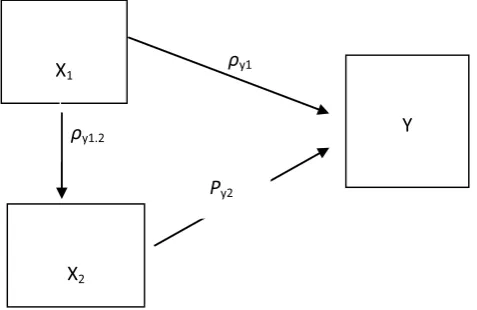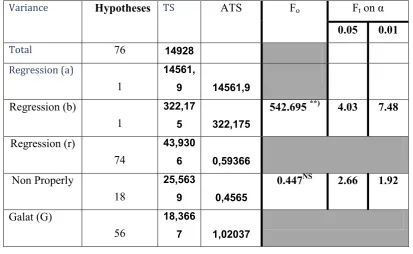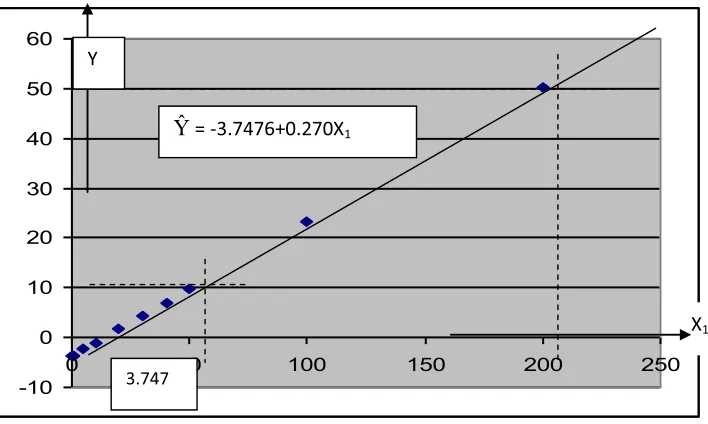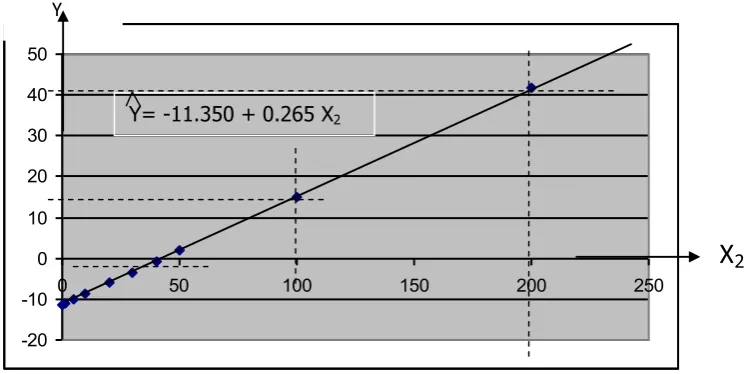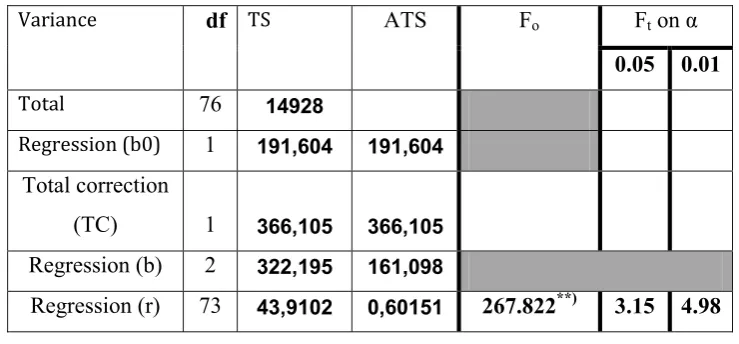The Relationship between Authentic Materials and
Cooperative Learning Strategy t
RZDUGV()/6WXGHQWV¶
Reading Comprehension
Siti Nurlela
Vocational High School (SMK) 20, Jakarta
Gunawan Suryoputro
University of Muhammadiyah Prof. DR. HAMKA (UHAMKA
),Jakarta
EFL (English as a Foreign Language) students of vocational high schools are requested to have skillful reading strategies to comprehend specific texts in English. To have a good comprehension, they utilize not only their strategies but also interesting and suitable texts. Therefore, this current study investigated the correlation between students’ perception of the authentic
materials and cooperative learning strategy towards students’ reading comprehension. The data of the reading comprehension tests and the students’
perception were analyzed using the multiple regression. The result revealed that (1) there was positive correlation between students’ perception of the authentic materials and students reading comprehension, (2) there was significant positive effect of cooperative learning strategy towards reading comprehension, and (3) there was significant positive effect of reading materials towards cooperative learning strategy. These findings suggested that the choice of authentic materials could motivate students to comprehend ESP texts. Besides this, by doing cooperative learning strategy, the scaffolding could happen so that they could share their comprehension. In spite of its limitation, this study could have certain pedagogical implications to reading classroom activities.
Keywords: authentic materials, cooperative learning strategy, reading comprehension
membaca dan persepsi siswa dianalisa menggunakan regresi. Hasilnya menunjukan bahwa: (1) ada hubungan positif antara persepsi siswa terhadap materi otentik dengan kemampuan membaca siswa, (2) ada efek positif yang signifikan antara strategi belajar kooperatif dengan kemampuan membaca, dan (3) ada efek positif yang signifikan antara teks and strategi belajar kooperatif. Penemuan dari studi ini memberikan pencerahan bahwa pilihan teks otentik dapat meningkatakn kemampuan membaca siswa. Disamping itu, strategi belajar kooperatif dapat memfasilitasi perkembangan membaca siswa dimana mereka bisa saling memberikan kontribusi. Meskipun ada keterbatasan, riset ini memiliki implikasi pendidikan terhadap kegiatan membaca dalam bahasa Inggris.
INTRODUCTION
Some previous studies found that in addition to readers’ vocabulary repertoire, the choice of materials affect the readers’ reading comprehension. Sacha (2006) found that students were not motivated when materials were selected from the textbook, Electrical and Mechanical Engineering, because the materials were not very stimulating. However, when they were given authentic materials downloaded from the internet, magazines, and brochures, combined with the use of task based activities and pair or group work, they were highly motivated. Similarly, the study conducted by Henita (2007) show that learners gave positive responses towards the use of authentic materials in their English class. This could be inferred that students need materials from various sources which are related to their specialization. These authentic materials could help them cater for their jobs when they graduate although they still found difficulties dealing with the authentic texts as these materials were not specifically designed for teaching. These studies support some previous studies which reveal that the authentic materials are considered to be interesting, appropriate and motivating for students at advanced levels (Guariento & Moreley, 2001; Mishan 2004). Thus, these suggest that authentic materials can reflect the real communication, and they could fulfill some social purposes in the language community (Peacock, 1997).
life task, serendipity is therefore one of the main virtues required (of the ESP writers): the ability to find an authentic text that will suit pedagogic needs.” (p. 136).
Some other authors such as Richards (2001) and Tamo (2009) suggest that authentic materials come from different sources such as texts, photographs, video selection, and teaching materials which are not prepared for pedagogical purposes. In this current study, the authentic materials were some sources from the internet, newspaper, magazine, and brochures. All materials were related to students’ field of studying the Indonesian vocational high schools, so it is expected that students can experience the real condition contributing to their future employment.
Another factor that influences the readers’ success in reading comprehension is learning strategy. Several studies have been conducted concerning learning strategy. Rahvard (2010), for instance, has investigated cooperative learning strategy in the teaching of reading. He did an experimental study to find out whether cooperative learning strategy motivated students in reading and to investigate whether the choice of cooperative learning strategy improved students’ reading comprehension. His findings reveal that the group using cooperative learning strategies achieved significantly higher results than the group without cooperative learning strategies. Similarly, Sudo and Takaesu (2012) conducted a study on collaborative map creation activity involving 51 students as participants at a private liberal art university in Tokyo. They found that the collaborative strategy encouraged students’
enjoyment, and students felt excited in comprehending the texts.
METHODS
Subjects and Design
The subjects of this study were the students of the State Vocational High School 20 Jakarta. Out of 253 students, there were 76 students who were randomly selected for this study. When the subjects participated in the study, they were all sitting at the second level (class 11). The authentic materials provided to them were adjusted to their field of study which belongs to the area of ESP. The goal of taking this course was to have reading comprehension skills. There are three variables, namely the students’ perception of authentic materials (x1) as the
first independent variable and cooperative learning strategy (x2) as the second independent
variable which have contribution to students’ reading comprehension achievement (Y) as the dependent variable, as illustrated in the figure below.
Figure 1: Variable constellation
Note:
X1= Students’ perception of the authentic materials
X2 =Cooperative learning strategy
Y = Students reading comprehension achievement
Instruments
To elicit the data, two instruments were used: questionnaire for X1 and X2, and reading
comprehension test for Y. The two instruments were constructed based on operational definition which was drawn in blue print from the instrument and indicator. Each indicator was used to construct items as a research instrument.
yϭ ͘ʌLJϭ
͘ʌLJϭ͘Ϯ
z
yϮ
Questionnaires were used to measure the students’ perception of authentic materials and cooperative learning strategy. Questionnaires were measured by Likert scale with 5 options comprising of both positive and negative options. The questionnaires were constructed based on the blueprint that was arranged from dimension and indicator. Each indicator was used for question items (see Appendix 1).
Reading comprehension test was used to measure students’ reading comprehension
which was designed by the teacher (one of the researchers) based on the school syllabus. The test consisted of 20 items of multiple choice (MC) forms with four options: a, b, c, or d. The MC was used in order to make the researcher easier in administering and investigating
students’ reading comprehension score (see Appendix 1). The data from reading comprehension test and the questionnaire of cooperative learning strategy were analyzed by the regression formula as presented in the findings and discussion section below.
FINDINGS AND DISCUSSIONS
The study applied the regression formula and correlation to test the three hypotheses. The first hypothesis was to find out the correlation between authentic materials and students’
reading comprehension. The second hypothesis was to know the correlation between cooperative learning strategy and students’ reading comprehension. The third hypothesis was to gain the correlation between authentic materials and cooperative learning strategy towards students reading comprehension.
The Relationship between the Authentic Materials (X1) and Reading Comprehension (Y)
The first hypothesis states that there is correlation between students’ perception of reading
material (X1) and students reading comprehension (Y). After calculating the data, it was obtained
that the prediction equation or simple regression formula was -3.747 + 0.270 X1. The
Table 1: Table ANOVA significant linearity test Ǔ -3.747 + 0.270 X1
. Hypotheses ATS Fo Ft 0.05 0.01
76 14928
ȋȌ
1
14561,
9 14561,9
Regression (b)
1
322,17
5 322,175
542.695 **) 4.03 7.48
Regression (r)
74
43,930
6 0,59366
Non Properly
18
25,563
9 0,4565
0.447NS 2.66 1.92
Galat (G)
56
18,366
7 1,02037
Note:
**)
very significance regression Fo = 542.695 > F-table = 4.03 and F-table = 7.48 on
significant degree D=0.05 or D=0.01
NS)
linearity regression Fo = 0.447 < Ft = 1.92 on D=0.01
Table 1 indicated that F-x1> F or Fx1-0= 542.695 > F = 7.48. It
means that Ho31 = 0 was not accepted, and Hi 31z 0 was accepted. In other words,
regression equation Y on X1 was very significant. The linearity of regression equation was F
=0.05)(18;56) = 2.66 and F = 1.92. After comparing with Ftable, it was found that Fx10 <
F or Fx1-2 = 0.447 < F = 1.92 so, Ho31 = 0was accepted, and HI 31z0
was refused because it was not true. So, the Ho was accepted, meaning that there was the
!"#$$%"&'""&'$()
can be concluded that the linearity of regression equation Y on X1 was linear. The linearity of
Figure 2: The graph of model Ǔ -3.747 + 0.270 X1
The &%"+&-3.747 + 0.270X1 was very significant and linear.
It indicates that every increase of students’ perception of authentic materials (X1) score would raise 0.270
point of reading comprehension (Y) in -3.747 of constants.
The strength of the correlation between students’ perception of the authentic materials (X1) and
students reading comprehension (Y) was shown by coefficient correlation ry1.2= 0.585. The result of
coefficient correlation of students’ perception of authentic materials (X1) towards reading comprehension (X3) showed that there was correlation of each variable. It means that students’
perception of authentic materials played an important role to improve the students’ ability in
comprehending the text. It is very reasonable that students’ perception of authentic materials affect students to comprehend the text because of several reasons. First, when students read the text dealing with their interest, it can stimulate them to dig every sentence in the text and try to comprehend it. Second, when the text has specific purpose which relates to students’ need, they
could have good response. Third, when the text sends up dating information, students will be enthusiastic to get the information.
These finding are in line with the findings of previous studies (Guariento & Morley 2001; Henita, 2007; Mishan 2004, Sacha 2006). They found that if students were interested in the text, they had great motivation to find out what they read. Consequently, it helps them to comprehend the text easily. Thus, the findings suggest that the choice of reading materials is one of the ways for teachers to help students comprehend texts. However, the study also found that though the students were interested in the authentic text, they seemed to find some difficulties when the
-10 0 10 20 30 40 50 60
0 50 100 150 200 250
yϭ
сͲϯ͘ϳϰϳϲнϬ͘ϮϳϬyϭ
z
authentic text was beyond their background knowledge. In this case, Clavel-Arroitia and Fuster-Marguez (2014) suggest that teachers have to make a kind of modification of the sources which might facilitate the students at these levels.
The Relationship between Cooperative Learning Strategy (X2) and Reading Comprehension (Y)
The second hypothesis states that there is correlation between cooperative learning strategy (X2)
and reading comprehension (Y). After calculating the data, it was obtained that the prediction equation or simple regression formula was -11.350 + 0.265 X2. The significance and linearity
test were done to find out whether the formula was significant or not. The result of calculation of significance and linearity test can be seen below:
Table 2: ANOVA of significant and linearity tHVWǓ - 11.350 + 0.265 X2
. df ATS Fo Ft
0.05 0.01
76 14928
ȋȌ 1 14561,9 14561,9
Regression (b) 1 308,371 308,371 395.248**) 4.03 7.48
Regression (r) 74 57,7345 0,7802
Non Properly 20 24,8702 0,46056 0.280NS 2.66 1.92
Galat (G) 54 32,8643 1,64321
Note:
**)
regression was very significance Fo = 395.248 > Ftable = 4.03 and Ftable = 7.48 at
significance degree D=0.05 D=0.01
NS)
linearity regression Fo = 0.280 < Ft = 1.92 D=0.01
Table 2 showed that F-10> F or Fx1= 395.248 > F = 7.48, meaning
that Ho:32 = 0 was refused and Hi: 32z 0 was accepted . It can be concluded that the linearity
The linearity of regression equation was F = 2.66 and F = 1.92.
After it is compared with Ftable, F20 < F or Fx1-20 = 0.280 < F = 1.92 so,
Ho32 = 0was accepted and HI 32z 0 was refused. T(+%&*!-
11.350 + 0.265 X2can be illustrated on the graphic below:
Figure 3: The graph of mRGHOǓ -11.350 + 0.265 X2
The result reveals that the significant and linearity regression test Ǔ=- 11.350 + 0.265 X2 was
very significant and linear. It indicates that every increase of cooperative learning strategy (X2) score would
raise 0.265 point of students reading comprehension (Y) in -11.350 of constants.
The strength of correlation between cooperative learning strategy (X2) and students reading
comprehension (Y) was pointed out by the coefficient correlation ry2.1= 0.370. This result
indicates that there is positive correlation between cooperative learning strategy (X2) and students
reading comprehension (Y). It can be concluded that cooperative learning strategy support students in comprehending the text. There are some reasons why this research finding is acceptable. First, not all students have high motivation in reading. It is because they do not have enough vocabularies to understand the text. This situation makes the students bored and reluctant to read. So, students should be given time to discuss the text in a group. By sharing their knowledge, they will grasp the information of the text and comprehend it easier. Second, cooperative learning will help students who cannot learn individually when they have obstacles in reading class. Learning in a group will assist students to solve their difficulties in comprehending the text. Third, cooperative learning leads students to be more active in learning. If the atmosphere of learning is active, it could stimulate students to
-20 -10 0 10 20 30 40 50
0 50 100 150 200 250
z
y
Ϯcompete each other to understand what they are reading. Thus, it will improve their reading comprehension. These findings support some previous studies conducted by Rivard (2010) and Sudo and Takesu (2012).
The Composite Relation between the Authentic Materials (X1) and Cooperative Learning towards Reading Comprehension (Y)
The third hypothesis states that there is composite correlation between students’ perception of
authentic materials (X1) and the cooperative learning strategy (X2) towards reading
comprehension (Y). After calculating the data, it was obtained that the prediction equation or multiple regression formula was - 4.064 + 0.261 X1.+ 0,010 X2. The significant test was
done to find out whether the formula was significant or not. The result of calculation of significant test can be seen below.
Table 3: ANOVA of significant test Ǔ= - 4.064 + 0.261 X1.+ 0,010 X2
. df ATS Fo Ft
0.05 0.01
76 14928
ȋͲȌ 1 191,604 191,604 Total correction
(TC) 1 366,105 366,105 Regression (b) 2 322,195 161,098
Regression (r) 73 43,9102 0,60151 267.822**) 3.15 4.98
Note:
**)
Multiple regression was very significance Fo = 267,822 > Ftable = 3.15 and Ftable = 4.98 at
significance degree D=0.05 D=0.01
Table 3 shows that F-1O> F or Fx1-10= 1267,822> F - = 4.98 meaning
that Ho:21= 0 was refused and Hi: 21z 0 was accepted . It can be concluded that the multiple
regression X1 and X2 on Y was very significant.
X1.+ 0,010 X2, it can be suggested that every increase of students’ perception of authentic materials (X1)
score raise 0.361, and the cooperative learning strategy (X2) score could raise 0.010 point of reading
comprehension (Y) in -4.064 of constants. The strength of correlation between students’ perception of
authentic materials (X1) and the cooperative learning strategy (X2) towards students reading
comprehension was pointed out by coefficient correlation ry.12 = 0.938.
It can be concluded that students’ perception of authentic materials and cooperative learning strategy improve students to achieve reading comprehension. When students are provided by interesting and challenging texts, they utilize the suitable learning strategies at the same time. Since the text was very challenging and interesting, they were motivated to cooperate with their group to find out solutions which were needed. Thus, the interaction among them happened in the process of learning activity in the classroom. This argument is also reflected in the results of questionnaire of cooperative learning strategy. The results reveal that 76 students provided the maximum score (113 out of the total score /194), meaning that most of them enjoy having the authentic materials for reading comprehension.
CONCLUSIONS
Based on the findings presented above, there are some pedagogical implications which are necessary to be drawn. First, to improve EFL students reading comprehension, teachers need to select authentic and challenging reading materials. They can be taken from newspapers, magazines, or the internet which are available and relatively easy to be accessed by both teachers and students. Authentic materials are quite relevant to students’ future jobs if selected well though these materials challenge them as they are not specifically designed for the classroom use. Second, cooperative learning strategy is believed to facilitate EFL students who cannot study individually. By doing cooperative learning strategy, the scaffolding could be facilitated, meaning that smart students could help poor ones. Third, reading materials would be a source in cooperative learning. By having enough authentic reading materials, every student could contribute to each other within the group.
learning strategies are not the only way of improving students’ reading comprehension; there are some more aspects related to reading comprehension such as readers’ threshold of vocabulary mastery and students’ motivation.
REFERENCES
Clavel-Arroitia, B., & Fuster-Marguez, M. (2014). The Authenticity of real texts in advanced English language textbooks. ELT Journal,68 (2), 124-34.
Guariento, W., & Morley, J. (2001). Text and task authenticity in the efl classroom. ELT Journal,55 (4), 347-353.
Jordan, R. R.(1997). English for Academic Purposes. A guide and resource book for teachers. Cambridge University Press, United Kingdom.
Mishan, F. (2004). Authenticating corpora for language learning: a problem and its solution. ELT Journal58 (3), 219-227.
Henita, N. (2007). The use of authentic materials for improving learners’ comprehension of text. unpublished thesis. Indonesian Education University (UPI), Bandung, Indonesia. Peacock, M. (1997). The Effect of Authentic Materials on the Motivation of EFL Learners.
English Teaching Journal, 51.
Rahvad, J. Z. (2010). California Linguistic Notes. Vol XXXV, 2. Retrieved July 3, 2011 from http://hss.fullerton.edu/linguistics/cln/SP10PDF/Rahvard-coop-Ed.pdf
Sacha, B. B. (2006). The use of Authentic Materials in Teaching of Reading. The Reading Matrix, 6.
Slavin, R., E. (1983). Cooperative Learning. Maryland: John Hopkins University.
Sudo, M., &Asako, T. (2012). Fostering active readers: a collaborative map creative activity for deep comprehension. Language Education in Asia,3 (2), 184-195.
APPENDIX 1
Sample of reading comprehension test (MC) - Text One
BRUEGGER’S BAGEL BAKERY
Bruegger’s Bagel Bakery makes and sells a variety of bagels, including plain, onion, poppy seed, and cinnamon raisin, as well as assorted flavors of cream cheese. Begels are the major sources of revenue for the company.
Bagels are very popular with consumers. Not only are they relatively low in fat, they are failing and they taste good! Investors like the bagel industry because it can be highly profitable: it only costs about $.10 to make a bagel, and they can be sold for $.50 each or more. Although some bagel companies have done poorly in recent years, due mainly to poor
shops that sell bagels, coffee, and bagel sandwiches for takeout or on-premise consumption.
Many stores in the Brugger’s chain generate an average of $800,000 in sales annually.
Production of bagels is done in batches, according to flavor, with each flavor being produced on a daily basis. Production of bagel ingredients of flour, water, yeast, and flavorings are combined in a special mixing machine. After the dough has been thoroughly mixed, it is transferred to another machine that shapes the dough into individual bagels. Once the bagels have been formed, they are loaded onto refrigerated trucks for shipping to individual stores. When the bagels reach a store, they are unloaded from the trucks and temporarily stored while they rise. The final two steps of processing involve boiling the bagels in a kettle of water and malt for one minute, and then baking the bagels in an oven for approximately 15 minutes.
Quality is an important feature of a successful business. Customers judge the quality of bagels by their appearance (size, shape, and shine), taste, and consistency. Customers are
also sensitive to the service when they make their purchases. Bruegger’s devotes careful
attention to quality at every stage of operation, from choosing suppliers of ingredients, careful monitoring ingredients, and keeping equipment in good operating condition to monitoring output at each step in the process. At the stores, employees are instructed to watch for deformed bagels and to remove them when they find them. Employees who work in the stores are carefully chosen and then trained so that they are competent to operate the necessary equipment in the stores and to provide the desired level of service to customers.
The company operates with minimal inventories of raw materials and inventories of partially completed bagels at the plant and very little inventory of bagels at the stores. One reason for this is to maintain a high degree of freshness in the final product by continually supplying fresh product to the stores. A second reasond is to keep costs down; minimal inventories mean less space is needed for storage. (adopted from www.bruggers.com)
Based on the passage above, answer these questions by crossing the correct choice.
1. How many types of bread roll does the above company produce? They are more or less
….
A. two B. three C. four D. five
2. Why did Bagel’s business ever go down?Because of ….
A. Bad quality B. Poor management C. Low Cost D. Wrong Marketing 3. What is the main idea of passage two?
A.Not only are they relatively low in fat, they are failing and they taste good! B.Investors like the bagel industry because it can be highly profitable. C.Bagels are very popular with consumers.
D.Many stores in the Brugger’s chain generate an average of $800,000 in sales annually.
A. $ 10. B. $50 C. $ 450 D. $ 800,000
5. What are the benefits of maintaining relatively little inventory for Bruegger’s?
A. Low cost and High profits C. High cost and small spaces
B. Low cost and freshness of goods D. High cost and freshness of goods 6. In what paragraph does the writer explain the production process? Sum-up it.
A. One B. Two C. Three D. Four
7. How are the qualities of the company’s workers? They have to be ….
A. competent only C. trained only
B. selected and selected D. competent, trained and selected. 8. What do these word “they” in line 4? It refers to …
A. Begals B. Burggers C. Customers D. Investors 9. What does the word “generate” mean?It means …
A. earn B. produce C. invest D. spend 10. What does the word “they” refer to? It refer to …
A. Begals B. employees C. consumers D. employers
APPENDIX 2
INSTRUMENT OF STUDENTS’ PERCEPTION OF READING MATERIALS AFTER
TRYING OUT
NAMA: KELAS:
PETUNJUK PENGISISAN: ISILAH PERNYATAAN DIBAWAH INI SESUAI DENGAN PENDAPATMU
No Butir Pernyataan Selalu Sering
Kadang-Kadang Jarang
Tidak-Pernah 1 Untuk melatih
kemampuan memahami teks bahasa Inggris, saya membaca suka memaca teks berbahasa Inggris melalui internet 2 Saya menghindari
3 Saya senang membaca berita bahasa Inggris di internet
5 Saya menghadapi kesulitan dalam
memahami bacaan dari koran berbahasa Inggris 6 Saya senang membaca
bahasa Inggris yang terkait dengan berita yang terhangat saat ini 7 Teks yang menarik
menambah semangat saya untuk memahami isinya
8 Bentuk teks memengaruhi saya memahami isi bacaan 9 Membaca
koran/majalah berbahasa Inggris berpengaruh terhadap hasil belajar bahasa Inggris saya
10 Belajar bahasa Inggris lebih mudah jika sering membaca
koran/majalah berbahasa Inggris 11 Saya memilih bacaan
sesuai dengan minat saya
12 Saya tertarik dengan bacaan bahasa Inggris yang dapat menunjang cita-cita saya
13 Saya menemukan kata-kata baru ketika membaca koran/majalah berbahasa Inggris 14 Teks berbahasa Inggris
dari internet menambah pengetahuan saya tentang struktur kalimat 15 Saya kurang memahami
isi bacaan jika tidak tahu artinya
bacaan
17 Untuk memahami bacaan, saya
menghubungkan bacaan yang lalu dengan sekarang
18 Pengalaman membaca yang lalu mampu memberikan
pemahaman terhadap apa yang sedang saya baca
19 Memanfaatkan lingkungan sebagai sumber belajar
membaca dari internet 20 Bahasa Inggris yang
